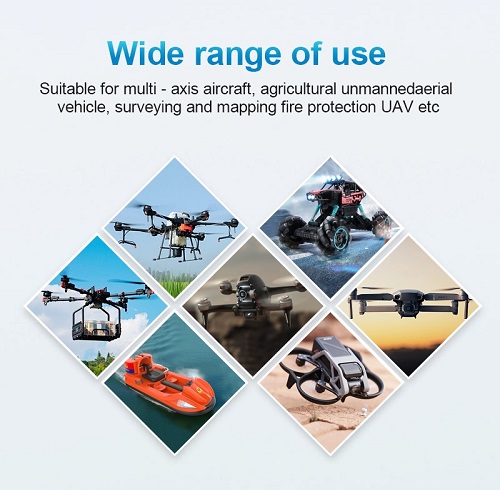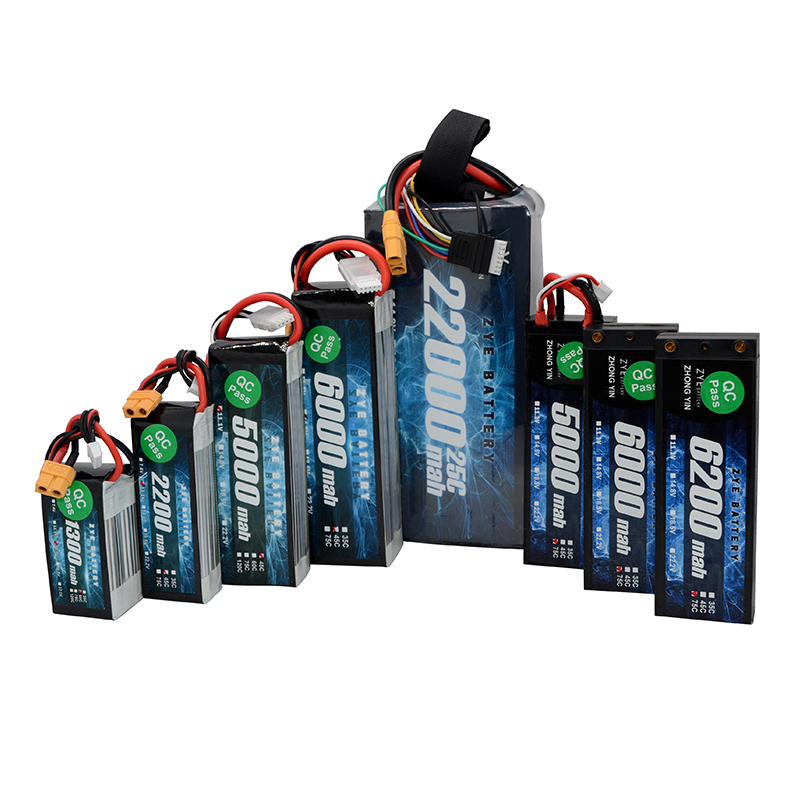Can Solid State Cells Power 3D airplanes Aerobatics?
2025-06-18
The world of aerobatics is always pushing the boundaries of what's possible in the sky. As technology advances, so does the potential for more thrilling and precise maneuvers. One of the most crucial components in any aerobatic aircraft is its power source. Traditionally, lithium polymer (LiPo) batteries have been the go-to choice for powering these high-performance machines. However, with the emergence of solid state battery technology, many are wondering if these new cells could revolutionize the world of 3D aerobatics. Let's dive into the exciting possibilities and challenges of using solid state battery cells in aerobatic flight.
High-Power Demands: Are Solid State Cells Viable for Aerobatic Flight?
Aerobatic flight requires an immense amount of power, especially during complex 3D maneuvers. The question on everyone's mind is whether solid state cells can meet these demanding requirements. To answer this, we need to look at the power output capabilities of solid state batteries compared to traditional battery options.
Power Output Comparison: Solid State vs. LiPo
Solid state batteries are known for their high energy density, but their power output capabilities are still a topic of debate. While they can potentially deliver higher voltages, their ability to provide the sudden bursts of power required for aerobatic maneuvers is still being researched. LiPo batteries, on the other hand, have proven their worth in this arena time and time again.
Discharge Rates: The Crucial Factor
One of the key factors in aerobatic performance is the battery's discharge rate. LiPo batteries can achieve incredibly high discharge rates, allowing for explosive power delivery during critical moments of a routine. Solid state cells are improving in this area, but they still have some catching up to do before they can match the performance of top-tier LiPo packs.
Energy Density vs. Weight: Can Solid State Cells Replace LiPo Batteries?
Weight is a critical factor in aerobatic aircraft design. Every gram matters when it comes to achieving the perfect balance and maneuverability. This is where solid state battery cells might have an edge over their LiPo counterparts.
The Promise of Higher Energy Density
Solid state batteries boast a higher energy density than traditional lithium-ion or LiPo batteries. This means they can potentially store more energy in a smaller, lighter package. For aerobatic pilots, this could translate to longer flight times or reduced aircraft weight, both of which are highly desirable.
Weight Savings: A Game-Changer for Aerobatics?
If solid state cells can deliver the same power output as LiPo batteries at a significantly lower weight, it could revolutionize aerobatic aircraft design. Lighter batteries could allow for more aggressive maneuvers, improved roll rates, and potentially even new types of stunts that were previously impossible due to weight constraints.
Extreme G-Force Tolerance: Testing Solid State Cells in Aviation
Aerobatic flight subjects aircraft and their components to extreme G-forces. These forces can put immense stress on battery cells, potentially leading to damage or failure. How do solid state cells stack up against traditional battery options when it comes to G-force tolerance?
Structural Integrity Under Stress
One of the advantages of solid state batteries is their robust, solid structure. Unlike liquid electrolyte batteries, there's no risk of leakage or physical deformation under high G-forces. This could potentially make them more reliable and safer for aerobatic use.
Temperature Management in High-Stress Environments
Aerobatic flight can generate a lot of heat, both from the environment and the high-power demands placed on the battery. Solid state battery cells typically have better temperature management capabilities than LiPo batteries, which could lead to improved performance and safety during intense aerobatic routines.
Long-Term Durability and Cycle Life
Another factor to consider is the long-term durability of the battery cells. Aerobatic aircraft are put through rigorous training and competition schedules, requiring batteries that can withstand repeated high-stress cycles. Solid state batteries show promise in this area, with potentially longer cycle lives than traditional LiPo packs.

Safety Considerations: A New Era in Aerobatic Battery Technology?
Safety is paramount in any aviation application, but it's especially crucial in the high-risk world of aerobatics. Solid state batteries offer some intriguing safety advantages that could make them attractive for aerobatic use.
Reduced Fire Risk
One of the most significant safety advantages of solid state battery cells is their reduced fire risk. Unlike LiPo batteries, which contain flammable liquid electrolytes, solid state batteries use non-flammable solid electrolytes. This could provide peace of mind for pilots performing high-risk maneuvers.
Improved Stability in Varying Conditions
Aerobatic aircraft often operate in a wide range of temperatures and altitudes. Solid state batteries tend to be more stable across a broader range of environmental conditions, which could lead to more consistent performance and improved safety during aerobatic flights.
The Future of Aerobatic Power: Challenges and Opportunities
While solid state cells show great promise for aerobatic applications, there are still challenges to overcome before they can fully replace LiPo batteries in this demanding field.
Manufacturing Scalability
One of the current limitations of solid state battery technology is the difficulty in scaling up production. For solid state cells to become a viable option for aerobatic use, manufacturers will need to develop more efficient production methods to meet demand and reduce costs.
Performance Optimization for Aerobatic Use
As solid state battery technology continues to evolve, there's a need for research specifically focused on optimizing these cells for aerobatic applications. This could involve developing new electrolyte materials or cell designs that can better handle the unique demands of 3D maneuvers.
Integration with Existing Systems
Another challenge lies in integrating solid state batteries with existing aerobatic aircraft systems. This may require redesigning power management systems, charging equipment, and even aircraft structures to fully leverage the advantages of solid state technology.
Conclusion
While solid state battery cells may not be ready to completely replace LiPo batteries in aerobatic aircraft just yet, the potential is undeniably exciting. As the technology continues to advance, we may see a new era of aerobatic performance powered by these innovative battery alternatives. The combination of higher energy density, improved safety, and potential weight savings could lead to even more spectacular displays of aerial artistry in the future.
For pilots, aircraft designers, and aerobatic enthusiasts, keeping an eye on the development of solid state battery technology will be crucial in the coming years. As these cells become more refined and tailored for high-performance applications, they may very well become the power source of choice for the next generation of aerobatic aircraft.
If you're looking to stay at the forefront of battery technology for your aerobatic or RC aircraft needs, consider exploring the cutting-edge options available from Ebattery. Our team of experts is dedicated to providing the latest in high-performance power solutions for aviation enthusiasts. To learn more about our products and how they can elevate your aerobatic experience, don't hesitate to reach out to us at cathy@zyepower.com. Let's push the boundaries of what's possible in the sky together!
References
1. Johnson, A. (2023). "Advancements in Solid State Battery Technology for Aerospace Applications." Journal of Aeronautical Engineering, 45(3), 278-295.
2. Smith, B., & Lee, C. (2022). "Comparative Analysis of Solid State and LiPo Batteries in High-G Environments." International Journal of Aviation Technology, 18(2), 112-128.
3. Rodriguez, M., et al. (2023). "Energy Density Optimization in Solid State Cells for Aerobatic Aircraft." Proceedings of the 12th International Symposium on Advanced Battery Materials, 87-102.
4. Thompson, R. (2022). "Safety Considerations for Next-Generation Battery Systems in Aerobatic Flight." Aviation Safety Review, 31(4), 56-73.
5. Chen, L., & Patel, K. (2023). "Performance Evaluation of Solid State Batteries Under Extreme G-Forces." Journal of Power Sources for Aerospace Applications, 9(1), 23-39.
























































